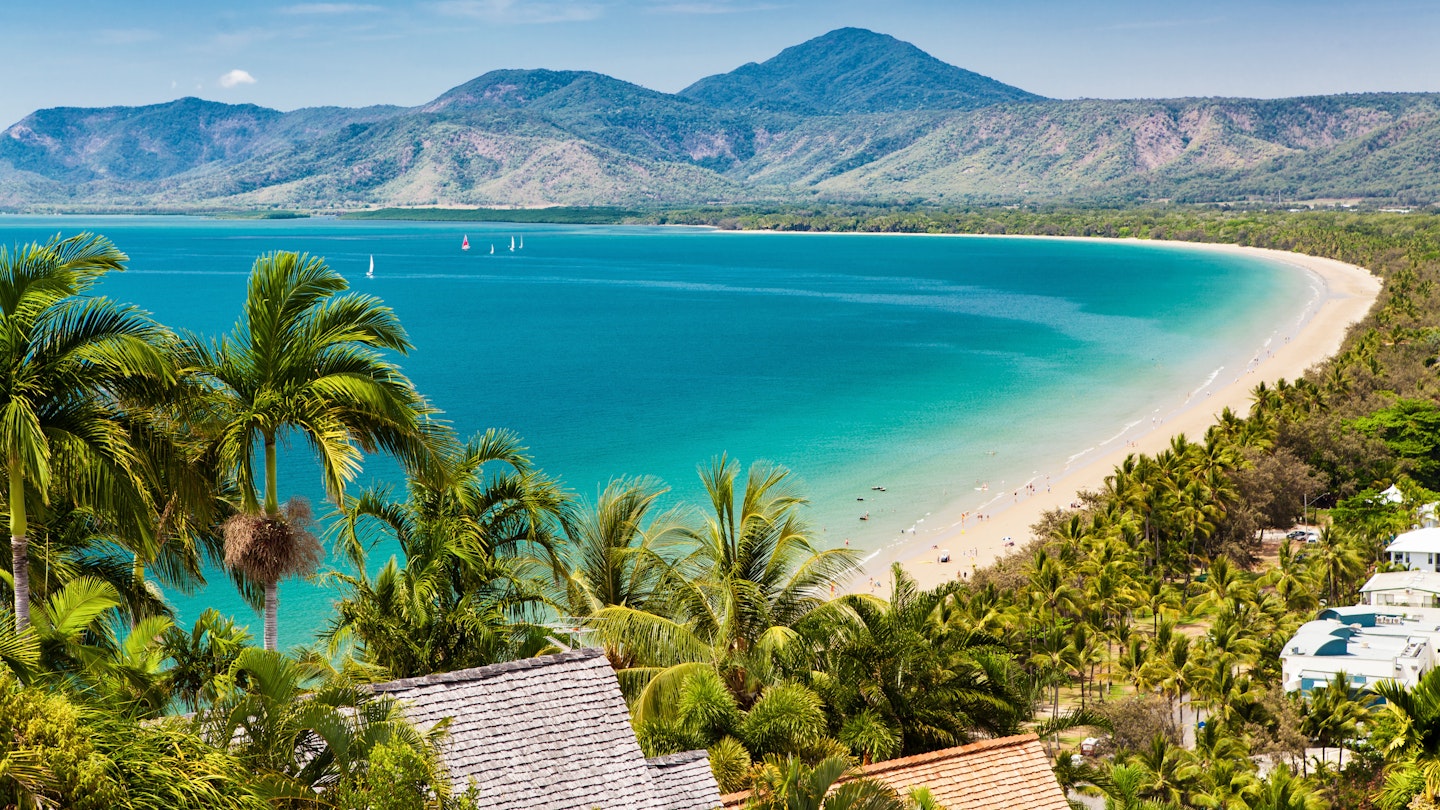Explore the Great Barrier Reef with GoTravelDaily
A ribbon of color and life providing a habitat for more than 9000 marine species, the Great Barrier Reef is an Australian icon. Despite increasing threats to its survival, the world’s largest living organism – stretching along the Queensland coast for over 2300km (1429 miles) – continues to dazzle visitors with its surreal underwater scenery from tip to tail.
The sultry northern Queensland city of Cairns is the most famous gateway to the Great Barrier Reef, however, there are plenty of other access points and an ever-increasing number of ways to explore this World Heritage-listed wonder and its 2900 individual reefs.
When is the Best Time to Visit the Great Barrier Reef?
The best time to visit the Great Barrier Reef is generally from June to November. From December to March, northern Queensland has its wet season, bringing oppressive heat, abundant rainfall, and the occasional cyclone. However, you will find bargains on reef tours and accommodation during this period. Stinger (jellyfish) season runs from November to May, with Lycra stinger suits provided to snorkelers and divers for protection.
Consistently, anytime is generally good to visit the Whitsundays and the southern Great Barrier Reef, where nature’s calendar features whale migration (June to October), turtle nesting and hatching (November to April), and coral spawning (about two days between November and December).
How Much Time Do I Need to See the Great Barrier Reef?
You can experience the Great Barrier Reef in as little as half a day from most land-based hubs along Queensland’s coast, but a full day is ideal to explore the outer reef, which boasts more impressive diving and snorkeling spots.
Liveaboard dive boats visit the most spectacular reefs, with most departing from Cairns for trips ranging from one to seven nights.
Can I Stay on the Great Barrier Reef?
You can find lodging on many of the reef’s 1050 islands and coral cays. Wake up with the reef on your doorstep at notable island resort bases such as Lizard Island, Green or Fitzroy Island, the Whitsundays, Heron or Wilson Island, or Lady Elliot Island.
Is it Easy to Get to the Great Barrier Reef?
Cairns and the nearby resort town of Port Douglas are the main launching pads for reef tours, with numerous operators offering everything from half-day trips to multi-day luxury charters. These regions boast airports with transfers readily available.
Top Things to Do at the Great Barrier Reef
Diving and snorkeling are highlights, however, there are various ways to experience this aquatic wilderness. Scenic small-plane or helicopter flights provide stunning views without getting wet, while non-swimmers can view the reef from glass-bottom boats and underwater observatories.
On land, Indigenous-guided tours offer insights into how Aboriginal and Torres Strait Islander peoples have harmonized with the reef for millennia. Cities like Cairns offer diverse tour options for visitors.
What’s the Most Child-Friendly Place to Stay at the Great Barrier Reef?
Families often gravitate towards family-friendly resorts and reef tour options in Cairns and Port Douglas, while resorts like Hamilton Island and Daydream Island cater other family needs in the Whitsundays.
How Much Money Do I Need to Experience the Great Barrier Reef?
A standard day trip to the outer reef, including snorkeling gear and meals, typically costs between AUD$200 to AU$350 per adult, depending on the operator. For budget-conscious travelers, half-day trips offer great value and convenience.
Where is the Best Diving and Snorkeling on the Reef?
There are excellent diving and snorkeling opportunities throughout the reef, particularly where vibrant corals and diverse marine life thrive. The northern sections often showcase more colorful corals, while the slightly cooler southern areas tend to be less prone to bleaching.
Can I Get Scuba Certified on the Great Barrier Reef?
Cairns is a hub for scuba certifications, offering courses from reputable outfitters. Open water courses combine practical and theoretical training to ensure safe diving experiences.
Isn’t the Great Barrier Reef Dying?
It’s well-known that the Great Barrier Reef faces severe threats, including coral bleaching caused by climate changes. However, parts of the reef have shown resilience, providing hope for its future. Visitors can contribute to conservation efforts through citizen science tours.
What Should I Pack for a Trip to the Great Barrier Reef?
Sun protection is critical. Select reef-safe sunscreen and always be prepared for various weather conditions. If diving or snorkeling, consider bringing your gear to save on rental costs.
What About Accessible Travel to the Great Barrier Reef?
The Cairns region features a wide range of accommodations, tours, and attractions with wheelchair access, ensuring that all visitors can fully enjoy the experiences the reef has to offer.
How to Stay Safe on the Great Barrier Reef
Follow safety instructions and avoid touching coral and marine life while enjoying the reef. While shark encounters are rare, wearing stinger suits during jellyfish season offers protection against stings.
My Favorite Thing to Do on the Great Barrier Reef
My passion for the Great Barrier Reef ignited during my first visit to the Whitsundays. The southern tip of the reef, with its vibrant marine life and eco-friendly resorts, uniquely captures the area’s beauty and fosters a connection to nature.





